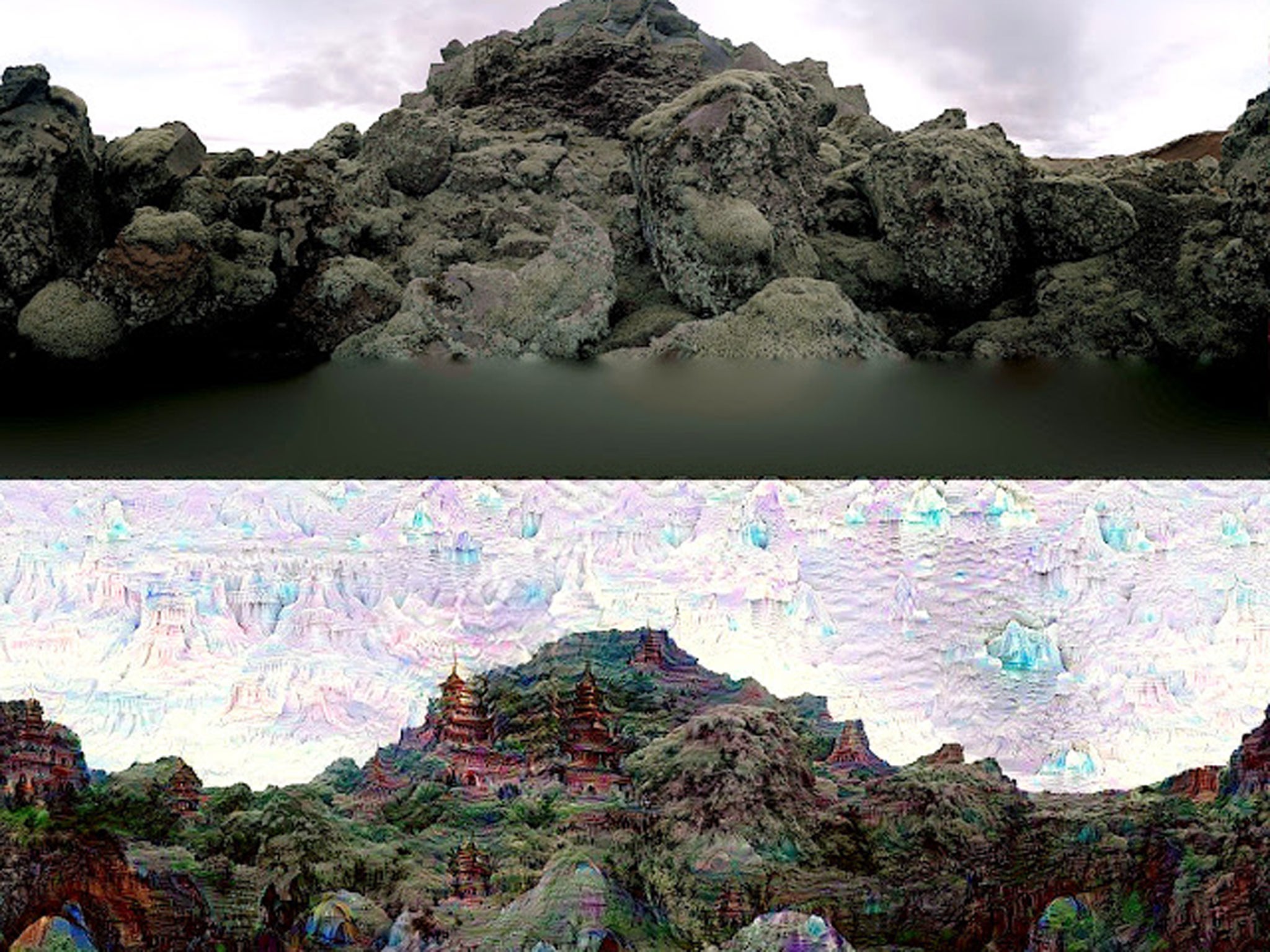Google has set its terrifying, dreaming image robots on the public
Google said that the technology might allow us to understand where human creativity comes from — and now they're putting it to the test

Your support helps us to tell the story
From reproductive rights to climate change to Big Tech, The Independent is on the ground when the story is developing. Whether it's investigating the financials of Elon Musk's pro-Trump PAC or producing our latest documentary, 'The A Word', which shines a light on the American women fighting for reproductive rights, we know how important it is to parse out the facts from the messaging.
At such a critical moment in US history, we need reporters on the ground. Your donation allows us to keep sending journalists to speak to both sides of the story.
The Independent is trusted by Americans across the entire political spectrum. And unlike many other quality news outlets, we choose not to lock Americans out of our reporting and analysis with paywalls. We believe quality journalism should be available to everyone, paid for by those who can afford it.
Your support makes all the difference.Google has opened up its image recognising robots to anybody — letting people create strange, horrifying images out of their own pictures.
Google released the half-horrifying, half-amazing pictures that it had created itself last week, with pictures including a knight made of dogs. Now the company has made the “Deep Dream” software available on code-sharing website Github, where anyone can download it and run their own pictures through it.
The software works by turning the image recognising computers on themselves. By telling the systems to over-interpret images, they would pick out otherwise meaningless things and exaggerate them — turning clouds into bizarre llamas, for instance.
As with Google’s own images, the pictures tend to transform thing into animals — with dogs being a particular favourite — and eyes. They also tend to overlay everything with a swirly rainbow colouring.
"It'll be interesting to see what imagery people are able to generate," wrote the Google engineers in the post introducing the tool. "If you post images to Google+, Facebook, or Twitter, be sure to tag them with #deepdream so other researchers can check them out too."
Join our commenting forum
Join thought-provoking conversations, follow other Independent readers and see their replies
Comments